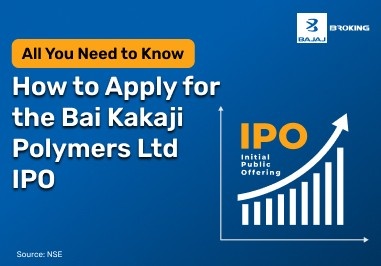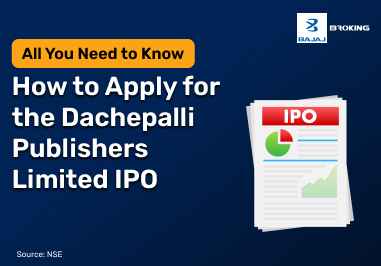The blog discusses the protective put strategy, an options trading risk management instrument used to protect investments from potential loss. It is particularly suitable for long asset holding investors who want to keep their investments away from market fluctuations. Investors here can still maintain their bullish position and have a fall-back option against significant declines in asset prices by purchasing a put option.
What Is a Protective Put?
A protective put is a hedging strategy that involves buying a put option for an asset that an investor already owns. This strategy allows investors to limit their downside risk while still benefiting from potential price increases. Essentially, it acts as an insurance policy, providing downside protection in case the asset's price falls below a predetermined level. This approach is applicable to various assets, including stocks and commodities, making it a versatile tool for risk management in the Indian financial market.
Additional Read: What is a Covered Put Strategy
How a Protective Put Works
The mechanics of a protective put revolve around the purchase of put options, which grant the holder the right to sell the underlying asset at a specified strike price before or on the expiration date. Here’s how it works:
- Long Position: An investor holds shares of a stock or another asset and wants to protect against potential losses.
- Buying a Put Option: The investor buys a put option with a strike price that serves as a safety net. The premium paid for this option is the cost of protection.
- Market Scenarios:
- If the Asset Price Rises: The investor benefits from the appreciation in value while only losing the premium paid for the put option.
- If the Asset Price Falls: If the market price drops below the strike price, the investor can exercise the option, selling at the higher strike price and limiting losses.
This strategy performs optimally in unsettled markets or during periods of unstable economies, allowing investors to contain risk but remain in their long positions. With protective puts, investors are able to sell intraday or long-term investments without much fear of potential falls.
Potential Scenarios with Protective Puts
When employing a protective put strategy, investors can anticipate various scenarios based on market movements. Here are some potential outcomes:
- Stock Price Increases: If the underlying asset's price rises above the strike price of the put option, the investor benefits from the appreciation of their long position. The put option could become worthless and cause a loss equal to the option's purchase price.
- Stock Price Remains Stable: If the asset's price stays close to the strike price at expiration, the investor might not exercise the option. Again, they would only incur a loss equal to the premium paid.
- Stock Price Declines: In this scenario, if the asset's price falls below the strike price, the investor can exercise their put option to sell at the higher strike price. This limits their losses and provides a safety net against significant downturns.
- Partial Coverage: Investors will also choose to hedge part of their long position using protective puts. This will allow partial risk management without completely losing the gain from the remaining shares.
These scenarios illustrate how protective puts can help investors navigate fluctuations in asset prices while maintaining a bullish outlook on their investments.
Advantages of the Protective Put Strategy
- Downside Protection: The primary advantage is that it limits potential losses on an asset while allowing for upside gains.
- Flexibility: Investors can choose different strike prices and expiration dates based on their risk tolerance and market outlook.
- Maintaining Ownership: Investors can hold onto their assets without selling them, preserving long-term investment strategies while hedging against short-term volatility.
- Applicability Across Assets: This strategy can be applied to various financial instruments, including stocks, ETFs, and even futures contracts.
Factors to Keep in Mind While Employing a Protective Put Strategy
- Cost of Premiums: The premium paid for purchasing put options can impact overall profitability. Investors should consider this cost when planning their trades.
- Strike Price Selection: Choosing an appropriate strike price is crucial. An at-the-money (ATM) option offers better protection but comes at a higher cost, while out-of-the-money (OTM) options are cheaper but provide less coverage.
- Market Conditions: Understanding market trends and volatility is essential when deciding to implement protective puts. This strategy is particularly useful during uncertain market conditions or when engaging in intraday trading.
- Investment Goals: Investors should align their use of protective puts with their overall investment strategy, whether it involves investing in bonds or maintaining long positions in equities.
By considering these factors, investors can effectively utilize protective puts to manage risk while pursuing their financial objectives.
Example of Protective Put
An illustrative example of a protective put strategy can be seen in the context of an investor holding shares of a company. Suppose an investor owns 100 shares of XYZ Ltd., purchased at ₹200 per share. Concerned about potential market volatility, the investor decides to implement a protective put strategy by buying a put option with a strike price of ₹190 and a premium of ₹5 per share. This means the total premium paid for the option would be ₹500 (₹5 x 100 shares).
In this scenario, if the stock price rises above ₹190, the investor can choose not to exercise the option, losing only the premium paid. However, if the stock price drops to ₹150, the investor can sell the shares, selling them at ₹190 and capping their loss at ₹15 per share (their cost minus the strike price), as well as the premium paid. This strategy effectively mitigates risk while allowing for potential upside gains in the stock price, showcasing how protective puts function as a vital risk management tool in options trading.
Conclusion
The protective put strategy serves as an essential risk management technique for investors looking to safeguard their investments in uncertain market conditions. By allowing investors to maintain their long positions while providing a safety net against significant declines, protective puts enable more confident participation in financial markets. This strategy is particularly relevant for those engaging in options trading or considering various investment avenues such as ETFs or margin trading facilities (MTF). Understanding how to effectively implement protective puts can enhance an investor's ability to navigate market fluctuations while pursuing long-term financial goals.














